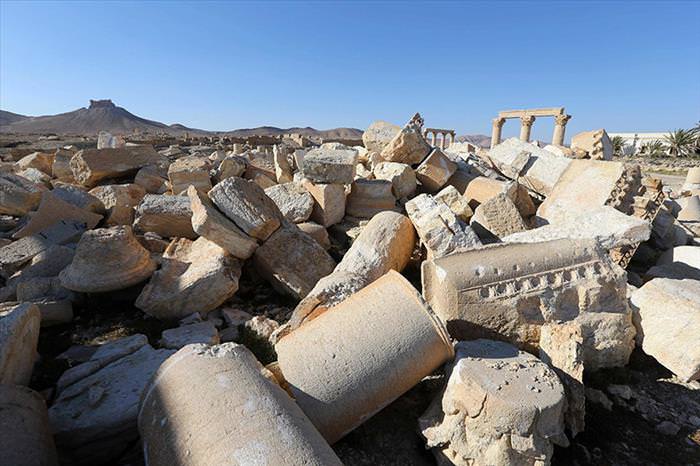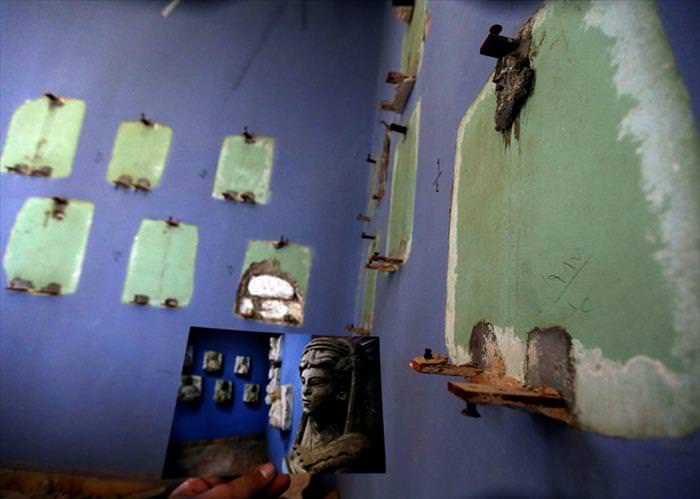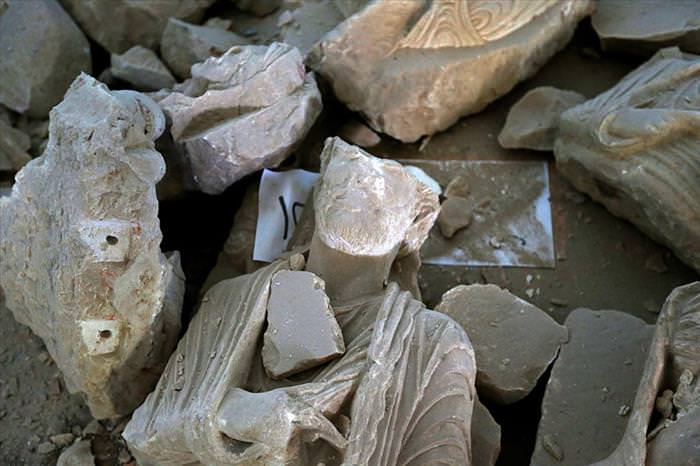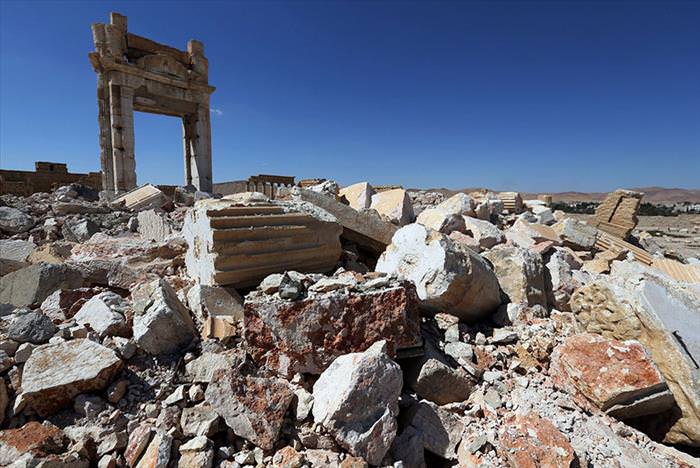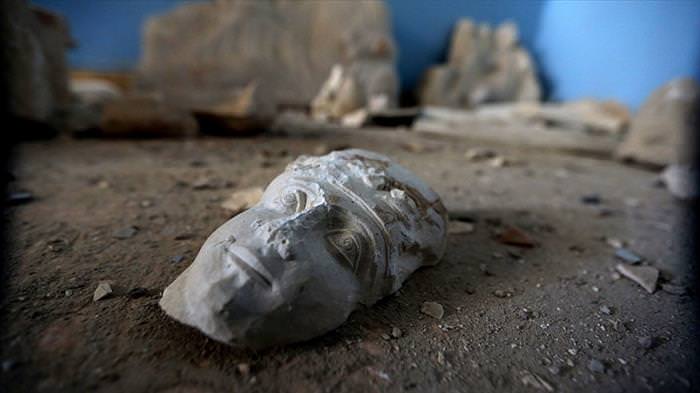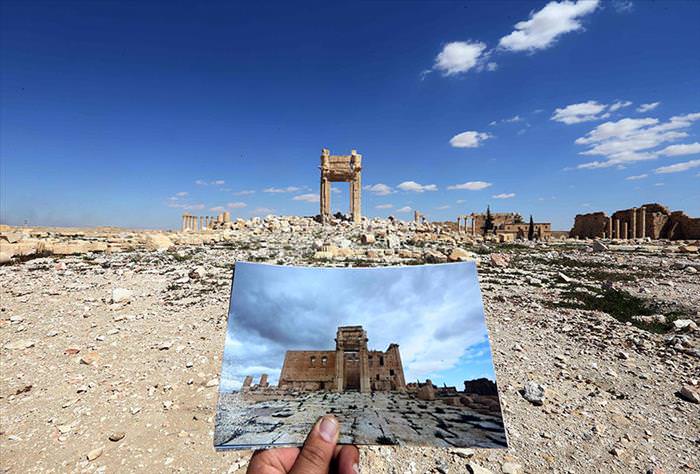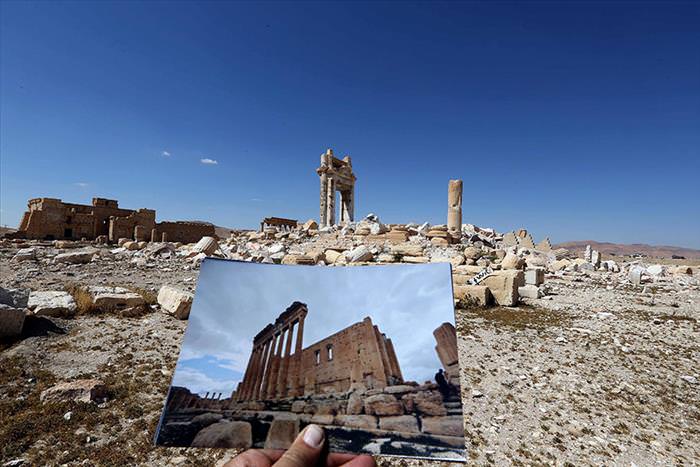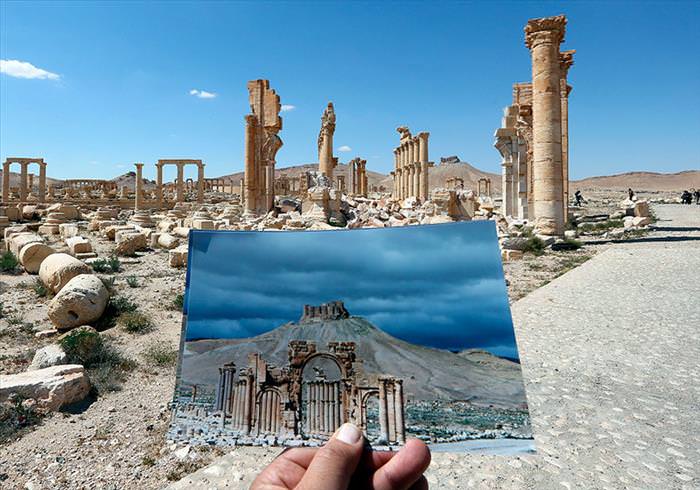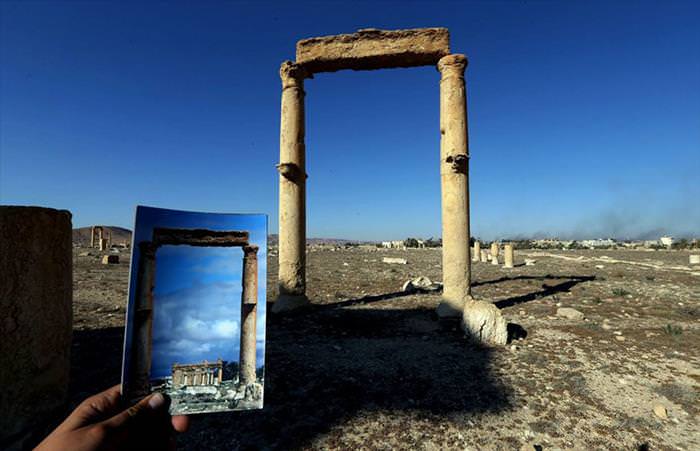
The Temple of Bel's inner chamber, or cella, in ruins. In classical architecture, a cella is where a cult image or statue of the temple's deity would have been kept.
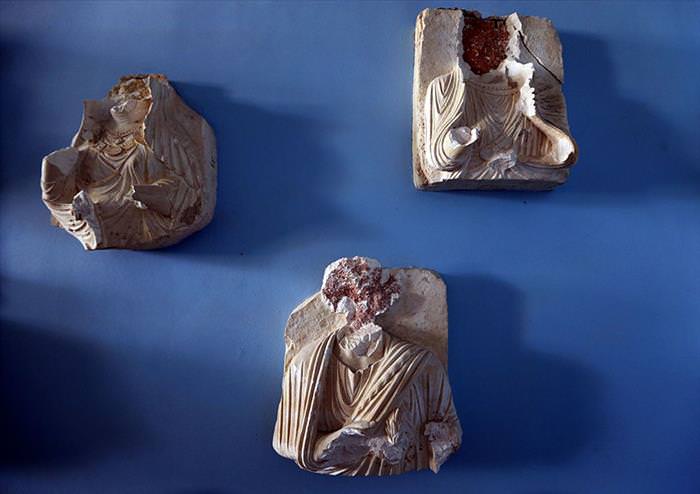
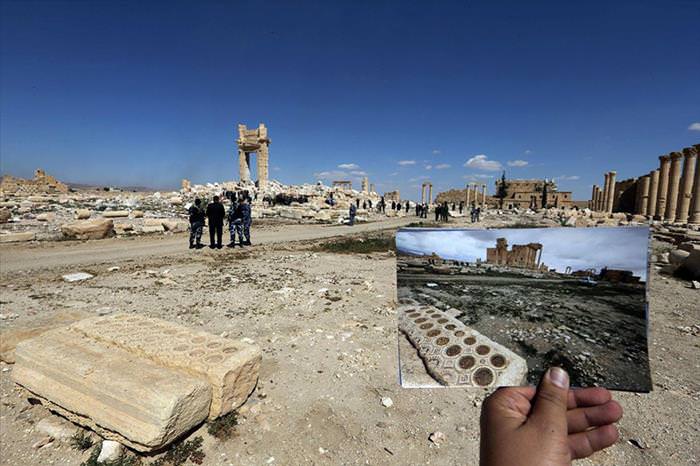

Top 10 Choppers That Have Truly Earned a Place in History!
Helicopters are a swifter and more maneuverable form of air travel, and over the years these are the helicopters that have made an impact
 11:02
11:02
The Incredible History of China's Terracotta Army
China's first emperor, Qin Shi Huang Di, had built a platoon of clay soldiers to accompany him in the afterlife. Find out more about this unusual piece of history.

Here’s Why 10 Million People Visit South India Annually
Kerala is one of India’s many hidden gems, a state filled with cultured cities, hill stations, farms, boat rides and a plethora of wildlife

Take Our Quiz And Learn to Identify Skin Cancer
This quiz offers a unique and interactive guide for you to learn how to recognize cancerous moles. This one is very important!

No More Rice Bowls! Four Ways to Salvage a Wet Phone
Getting your phone wet can be stressful, so here are four tips on how to save it from water damage, from tech experts (there is no rice involved...)
 7:56
7:56
6 Chemical Reactions that Changed the Course of History
Although we rarely pay much attention to the chemistry that constantly surrounds us, these 6 reactions changed history.

How We Came to Play: The Origins of Playground Games
The fun games we played in our childhood had some interesting origins.

These Tips Will Help You Start Reading Again
Reading skills not as strong as they were in the days of yore? Here are my tried-and-true tips to help you get back on the reading horse.
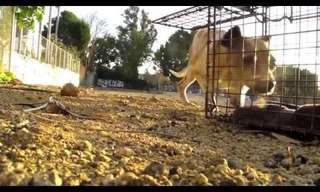 8:23
8:23
Learning to Trust Again - Rehabilitating an Abused Dog
Ralph the abandoned dog learns to trust again...

Marilyn Monroe's 15 Unforgettable Quotes That Resonate
These Marilyn Monroe quotes will change what you think of her.
 5:43
5:43
This Soulful Cello Performance Will Give You Goosebumps
Sit back and enjoy this amazing cello performance

Collection: The Greatest Moments in History
A collection of fascinating, sometimes controversial and surprising stories from the annals of history. Explore and learn about the fascinating past of humanity and some of its most outstanding figures.

Here Are 18 Facts That Are Bound to Blow Your Mind!
Here are 18 amazing facts that you won't be forgetting anytime soon!
 12:47
12:47
The True Story of Oppenheimer and the Atomic Bomb
Before you head to the theaters to watch Christopher Nolan’s ‘Oppenheimer’, find out the real story of the “father of the atomic bomb”.

6 Creepy Mysteries the World Never Solved
There are some mysteries that, despite scientists’ best attempts, still remain unsolved to this day. Here are 6 such mysteries.

30 Essential Medical Terms For Bodily Functions
The next time you hear a doctor utter something in Latin, pay close attention, as after reading this article, you may understand what it means.

Have You Been Believing These Christmas Myths Too?
Read on for several myths about Christmas stories and traditions.

Behold the Worst Predictions in History!
Not every prediction is true, and some of them, like the ones on this list - miss the mark by a mile!

These Photos Prove How Strange of a Country South Korea Is
The following images illustrate how strange of a place Korea is.

In the West, We Have Much to Learn From the East...
Eastern philosophy is vastly different to Western philosophy, and we all have much to learn from the schools of thought from that part of the world.

It’s a Shame We Stopped Using These 17 Old English Words
These 17 old words are definitely missing in our modern vocabularies and deserve to be brought back into day-to-day speech

18 Unlikely But True Facts That Will Get You Thinking
The saying truth is stranger than fiction is all too true when you read these incredible facts. #2 had me grabbing for my calculator.
 2:57
2:57
'What a Wonderful World' Like You've Never Heard Before!
Listen to this hauntingly beautiful cover of the classic song “What a Wonderful World”.

12 Typical American Things That Didn’t Originate in the US
Many things we often think are typically American, such as cowboys, comic strips and mac & cheese, have actually started far away from the USA
 6:38
6:38
Juggling Legend Kris Kremo Will Leave You in Awe
Get ready to be thrilled by juggling legend Kris Kremo’s captivating performance.
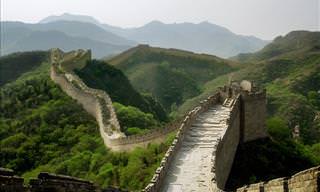
Amazing! 7 Facts That Have Changed Since Your School Days!
Over time, facts we consider to be completely true can change. Here are 7 facts that have changed since your school days.
 7:17
7:17
The Truth About June. Touching and Wonderful.
A beautiful story about a mother's love, which I warmly recommend.
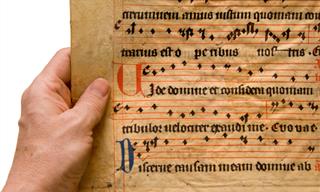
Listen to the Enchanting Notes of the World's Oldest Songs
In this article, we will be talking about the oldest known pieces of music ever found.

How Companies Deceive Us All - 20 Pictures
As these 20 pictures prove, companies are constantly lying about the size and the quality of their products through deceptive packaging!

If You Like Greek Mythology, Don’t Miss These Movies!
If you’re interested in Greek mythology, then make sure you check out these amazing films.

8 Facts You Learned at School that Are No Longer True!
The passage of time leads things that were once accepted as facts to actually be proven as incorrect. Here are 8 supposed facts that aren’t really true.

13 Insightful & Thoughtful Quotes by John F. Kennedy
In this article, we will explore some of the best quotes by John F. Kennedy, which reveal the depth of his wisdom and his dedication to public service.

2024 is Here! And This is Why You Should Be Excited for It
2024 is here! And this is why you should be excited for it.

13 Books That Will Make Your Time Fly
These times of social distancing are perfect for catching up on your reading. Check out this list of 13 must reads to get started.
 4:41
4:41
From Ages 7 to 93 these People Share Tips on Ageing Gracefully
Watch people of all ages offer words of wisdom to their younger counterparts.

These Couples Show Us That You're Never Too Old to Find Love
It’s never too late to find true love. These inspiring couples show one that love has no age limit.

12 Juicy Facts You Probably Don't Know About Grapes
Did you know grapes are actually berries? Find out more juicy facts about grapes in this article.
 2:50
2:50
98-Year-Old Gives a Brilliant Live Piano Performance!
American Singer Josh Turner's very talented grandmother-in-law gets a standing ovation for playing "How Great Thou Art" on the Piano.

5 Assassinations of World Leaders that Shook the World
Read through these five infamous assassinations of world leader shook the world.

10 Mysteries that have Shocked Human History
10 incredible mysteries we know very little about.
 2:35
2:35
A Massive Gorrila, But Watch Her With Kittens...
This video is amazing, I never knew gorillas could be like this.

From Across the Decades, These Photos are Fascinating!
Join us as we take you through the ages and see some really incredible sights!

Rare Interesting Historical Photos That are Must-See
You won’t find these rare photos in your history books.
 2:48
2:48
An Unforgettable a Cappella Rendition of 'Stand By Me'
Enjoy this unforgettable rendition of the timeless song "Stand By Me" by the Buzztones, a UK-based a cappella group.
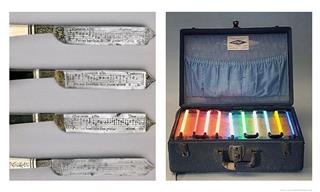
Museum of the Weird: 15 Fascinating Finds
Historical artifacts don't get weirder than this.

The Significance of Each Christmas Tree Decoration
We all tend to put up Christmas decorations and go through all the rituals every year, but do we know what the symbolism behind them is? Find out here.

The Most Insightful Quotes From the Mind of Albert Einstein
Allow me to share some of the insightful quotes that came out of Albert Einstein's head



